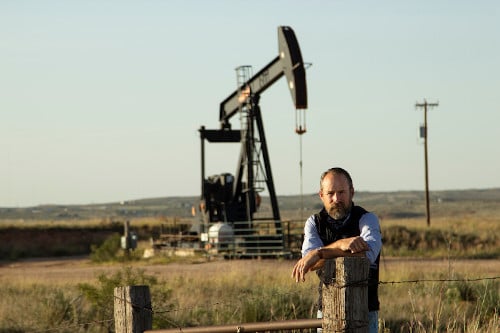The Landman: A Singular Profession

George W. Bush, Aubrey McClendon, and T. Boone Pickens. The three names bear commonality in that each immediately brings to mind patriotism, capitalism, and wealth. They also share another common element, in that each spent time in the early stages of their careers as petroleum landmen. What exactly is a landman? Spend enough time in Texas and you’re bound to run across a landman or hear the word used. Yet many remain unclear as to what a landman is and what their career entails.
The Origins of the Profession
The first formal education curriculum for petroleum land management was established at the University of Oklahoma in 1958. However, the prominent use of landmen in the United States oil and gas industry began long before that. In 1859, oil was first discovered in the United States in Titusville, Pennsylvania, and so began the long and arduous process of obtaining oil and gas leases. Although some oil and gas companies own the rights to the oil and gas that they extract from the ground, most are pumping hydrocarbons under lease rights. In short, the mineral owner executes a lease granting the oil company the right to enter one’s property, drill for oil, and produce and transport it off site. This is done in exchange for both an upfront cash payment, or bonus, as well as an interest, commonly referred to as a royalty, in any future production. To negotiate this lease contract, the oil company will most often turn to their landman, who will conduct the research into the legal ownership of the minerals, prepare the documents necessary for acquiring the lease, arrange payment, and many times handle drilling-related and post-production issues with the mineral owner and/or landowner.
Though an oil and gas company may develop and produce a particular reservoir for many years, the acquisition stage of the leases associated with this development may be very short. As such, there is no economic benefit to retaining a full-time staff of landmen with the company; often, these services are contracted out only when needed. A company may be involved in only two or three acquisitions projects in any ten-year period, most lasting between a few months to upwards of two to three years. However, when the company is satisfied that sufficient acreage has been acquired to meet their drilling needs, the acquisition of oil and leases comes to a conclusion—as does the need for the landman. Generally, once the lease has been acquired, the landman’s services are no longer needed.
This structural fact of the industry, combined with the volatile and unpredictable price of oil, has led the landman’s profession to become very transient. In the first few years of my career, I worked as a landman for three different clients in two states. The projects ranged in size from just over 1,000 acres to more than 100,000 acres and had timetables ranging from two months to over a year. Many landmen start out similarly. Reservoir development exists all over the United States, and all of these areas at some point need the assistance of a petroleum landman.
The Landman’s Day-to-Day
The job of the petroleum landman begins with contact from the land manager associated with a particular oil company. The land manager is usually a full-time employee of the company and often serves as the general counsel as well. The land manager will show the landman where the company would like to acquire leases, often using a geologic or topographic map. The land manager will also explain (1) the terms of the lease being offered, including royalty and length of lease, as well as (2) the threshold amount of acreage that needs to be acquired before the company can justify the next stage: exploration. In order for the company to justify to their financial lender that a particular project has long-term potential for multiple drilling opportunities, it will need to first obtain the appropriate amount of acreage to do so. As discussed previously, this can range from merely two or three “sections” (640 acres each) to over a hundred sections of land.
Once the threshold acreage has been determined, it’s time for the landman’s next task: researching the deed records pertaining to the project. It’s commonly forgotten that in the State of Texas, the owner of the rights to the minerals underneath the ground is often different from the owner of the surface. You can find out who the surface owner is at any local tax appraisal district, but if the minerals are unproducing, their ownership can only be determined through research in the county courthouse. The records can either be kept in the local county courthouse or in the title and abstract company. Many title companies, while offering services and documents more closely associated with real estate transactions, also make available records for landmen researching the mineral rights. If this resource is not available, then the landman must go in person to the local county courthouse.
A landman will usually begin by looking at the original deed, or patent, from the granting body. In Texas, the original granting entity is usually the governor or merely the State of Texas. While the first legitimate grant of land in Texas occurred in 1731, the patents spoken of here were usually granted between 1836 and 1904. From that point, the landman will begin to research the historical chain of records as the property is sold or conveyed from one party to another.
Beginning shortly after the turn of the 20th century, when oil began to be discovered in commercial quantities in Texas, the reservation of mineral rights likewise began to appear in the deed records. As the surface interest in a particular property was sold, landowners would keep to themselves—or “reserve”—the rights to the minerals in the event that oil and gas were ultimately discovered in the future. After the past 120 years of activity, there are now multiple owners of mineral rights under any given tract of land. The landman will ascertain these individual owners as well as their proportionate share of ownership and reduce these findings into a report and ultimately into a lease for each owner to sign. For the most part, a drilling rig will very rarely commence operations until all of the owners have been taken under lease. This can range from one or two owners under a single tract of land to more than two hundred depending on the amount of conveyances that have taken place over the years.
At that time, the landman will begin to research current addresses and telephone numbers and locate the appropriate mineral owners to begin the lease negotiation process. Depending on the location, an oil and gas lease can be acquired for anywhere between $15 per acre, such as in some areas of northwest Kansas, to over $5,000 per acre, such as in some areas of central Oklahoma. These prices are also dependent upon the price of oil and thus may quickly descend to become almost valueless within a few hours. Based on the speed of the project and the experience of the landman involved, oil and gas leases can be negotiated over the telephone, via email, or through the mail service, but most astute landmen still prefer to meet their mineral owners in person, if possible. In addition to the cash payment made up front, the lease carries with it a royalty provision, usually ranging between 20 to 25 percent of the after-cost proceeds of the production from the well associated with the mineral owners’ share.
Landmen of the Future
Clearly, the landmen of the past and present serve a very specific but critical role in the oil and gas industry. But what is their future? Though landmen are historically associated with the petroleum industry, the services around acquisition of lease rights for an oil well are very similar to those used in acquiring energy leases for wind and solar energy. Increasingly, these alternative energy leases have developed into a beneficial avenue for landmen as they seek to broaden their experience and sustain their careers when oil prices are depressed. With every passing year, it becomes more common to see solar farms, wind turbines, and oil and gas wells occupying the same landscape, especially in North Central Texas, West Texas, and the Texas Panhandle. This has created new opportunities for Texas landmen, and created new avenues for surface and mineral owners alike to use their services. We’ve come a long way since the heyday of George, Aubrey, and T. Boone, but it looks like the core function of the landman is here to stay.
Landman or Landwoman? While the oil and gas industry is still male-dominated, there are many female landmen working today. It may sound odd, but the masculine term—landman—is traditionally used to refer to both men and women in the profession. This is codified in the Bylaws of the American Association of Professional Landmen, though that could change at some point in the future




The Permian Basin: A Texas-Sized Resource
September 20, 2022